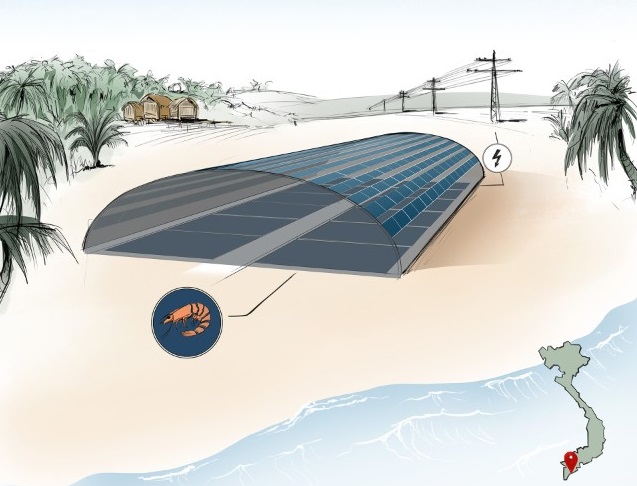
News
Sustainability
Solar energy gives aquaculture a boost in SHRIMPS project
November 26, 2019 By Nestor Arellano

Photovoltaic (PV) technology has the potential to help solve the energy demand problems of land-based aquaculture operators, according to Fraunhofer Institute for Solar Energy Systems.
Fraunhofer researchers are working at an experimental shrimp farm run by Viet Uc Seafood along Mekong’s upper basin. Other partners in the project called Solar-Aquaculture Habitats as Resource-Efficient and Integrated Multi-layer Production Systems (SHRIMPS) include the Nong Lam University and the Vietnamese Institute of Energy.
Energy demand is currently increasing by 10 per cent each year in Vietnam. Competition for land is also on the uptick. The project aims to demonstrate the technical and commercial feasibility of dual land use for solar power generation and commercial aquaculture.
The pilot program involves making use of canopies installed over fish farms. An increasing number of aquaculture facilities in Southeast Asia are enclosed in greenhouses to prevent the introduction of diseases by birds and other aquatic animals.
Solar modules can be installed on the canopies of these enclosures, according to Fraunhofer.
The shade provided by the modules can improve working conditions for the employees at the facility. The shade can also help maintain a lower water temperature which enhances shrimp growth.
The one-megawatt pilot plant in Bac Lieu has the potential to cut CO2 emissions by about 15,000 metric tons each year and cut water consumption by 75 per cent compared to that of a conventional shrimp farm.
Another plant with a 400-kW capacity is being erected in a freshwater basin where basa is bred.
The plant’s solar modules are elevated above the water’s surface. This will reduce water evaporation and will also protect the fish from predatory birds.
Aquaculture farms in the area typically rely on diesel-powered generators. The basa farm is off-grid. It will run solely on solar energy.
“We want to use this project to demonstrate the added value that can be generated by integrating photovoltaics into different areas of life,” said Maximilian Trommsdorff, project manager of Fraunhofer ISE. “For Aqua-PV, we’re currently working on the assumption that the land use rate can be almost doubled compared with a ground-mounted PV system alone.”
Print this page